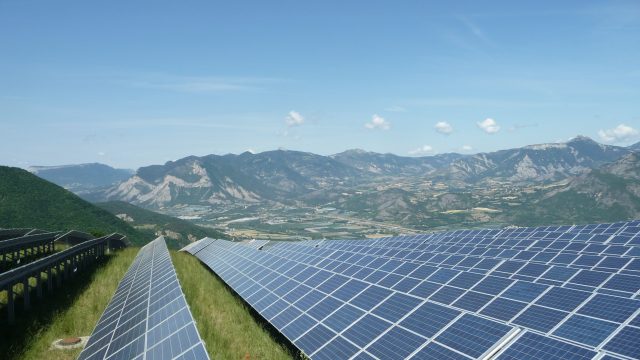Workforce dilemma casts long shadow
As published in PV Magazine November 2023
Solar industry expansion is racing ahead, but shortages of skilled labour could derail progress. Long-term solutions are required to support further growth. Benoit Ribeaud, partner at Everoze, explores how a workforce bottleneck is affecting the solar industry and calls for more action to alleviate recruitment pressure.
Solar is everywhere. From large, ground-mounted, utility-scale sites to residential rooftops, growth across the industry shows no signs of slowing. In Europe alone, installed generation capacity is expected to double in the next five years. But the dream could become a nightmare if a lack of qualified labour is left unaddressed.
In 2022, the solar sector employed 648,000 full-time equivalent (FTE) workers in the European Union. The vast majority of them were involved in solar provision, according to trade association Solar Power Europe’s “EU Solar Jobs Report 2023.” Of the current PV workforce, 84% is engaged in the deployment of solar farms, while the remaining 16% is divided between manufacturing, operations and maintenance, decommissioning, and recycling.
Labour shortages
Europe’s solar workforce is expected to reach 1.2 million FTEs by 2027. This implies that the industry, especially developers, will need to recruit approximately 470,000 new workers, primarily focused on deploying solar farms, as well as the rooftop sector. The anticipated split between rooftops and ground-mounted installations is expected to be 60% and 40%, respectively.
Everoze has seen the impact of labour shortages first hand while conducting corporate due diligence for investment transactions. Developers often require substantial hiring to meet internal targets and keep projects viable. Addressing workforce challenges is crucial for the growth of companies and the industry.
A shortage of qualified labour is also affecting quality control. Despite the relative maturity of a market now 15 to 20 years old, scarcity of labour leads to mistakes like the kind seen in the early 2010s. This leads to a renewed need for independent advisors to scrutinize projects. The main risk of an insufficiently skilled workforce is projects being developed, designed, built, and operated below industry standards – projects that fail to achieve intended performance, encountering delays and additional costs in the process.
Hiring issue
From development to design, construction, commissioning, or operation, the same story is told repeatedly. How many people do you need to deploy a ground mounted solar farm? For a 10 MWp site, a rough estimate might read: one or two developers to handle permitting, two to four design engineers, one or two electrical engineers, and a team of construction workers. Bottlenecks appear when specialists are required, such as grid connection specialists, particularly as grid access requirements evolve and there are growing constraint risks in many jurisdictions. Having an in-house workforce dedicated to this is crucial. Still, it’s hard to find skilled individuals in this field and labour scarcity is expected to persist.
Some companies are forced to use external engineers on their projects. For instance, Skyray, a subsidiary of Everoze, specializes in design and owner engineering works. Unfortunately, Skyray also faces recruitment challenges when hiring the qualified staff necessary to meet client demands. Using external talent is a good temporary solution for tackling bottlenecks but it does not solve the problem in the long run.
New engineers could help to address the issue, but the forecast doesn’t look good. The prevailing trend over the past few years has been a decrease in the proportion of science, technology, engineering, and mathematics students in Europe, narrowing the pool of future candidates. With the solar energy sector relatively young compared to other segments of the energy industry, recruiting skilled, experienced specialists to lead departments, manage teams, and provide training can be like finding a needle in a haystack. Salaries are soaring as a result, leaving many companies reluctant to hire.
Talent poaching

Businesses grappling with these challenges have adopted various approaches to address them. Major players are offering highly competitive salary packages, including shares, bonuses, and participation incentives in a bid to retain talent and secure their market share. This approach is creating a market bubble, however, that may not foster a fair and sustainable employment environment.
Other companies are placing their bets on young talent by hiring individuals early in their careers – even without relevant experience – and investing time in training and instilling company culture. It’s not an approach without risk, as trained employees may leave if they receive a better offer from a competitor.
Alternatively, some companies are exploring the potential of recruiting experienced professionals from other industries, such as telecommunications, real estate, oil and gas, and the agricultural sector. The hope is these workers will leverage their knowledge and apply it to the solar industry. You can expect this kind of colleague to bring experience in, for example, project development or management, but they will still need to adapt to their new industry.
Next steps
So, what’s the solution? It will not come from individual players or large corporations. Public authorities must act, taking action to orientate young people or retrain skilled workers from other industries. This is essential to tackling the climate crisis. The solar industry holds a promising future despite today’s recruitment challenges. This presents new risks and numerous opportunities. Ensuring steady growth should not jeopardize the high-quality standards required from conception to operation. That’s something that we recognize at Everoze, and we’re hiring, too.






